Innovative Seismic Protection Concepts
It has been several decades since the realization of the earthquake engineering community that the increase of strength of a structural system does not necessarily enhance safety. This led to the development of new design principles and performance-based design. Less attention has been paid to the soil-structure system as a whole. In fact, current design practice attempts to avoid full mobilization of foundation bearing capacity. However, neglecting such phenomena prohibits exploitation of strongly nonlinear energy dissipation mechanisms in defense of the superstructure.
We have been investigating the mechanisms governing seismic soil–structure interaction (SSI), with emphasis on the rocking response of shallow foundations. As part of the ERC-funded DARE research project, a new design philosophy termed “rocking isolation” has emerged, exploiting soil “failure” to protect the superstructure (external page J28). By intentionally under-designing the foundation, this acts as a “fuse” and the plastic hinge is “invited” into the foundation soil. In this way, the soil yields progressively while the structure remains undamaged; the ductility capacity of the entire system is significantly increased. The price to pay is reflected in residual settlements (and rotations) that need to be accounted for in design.
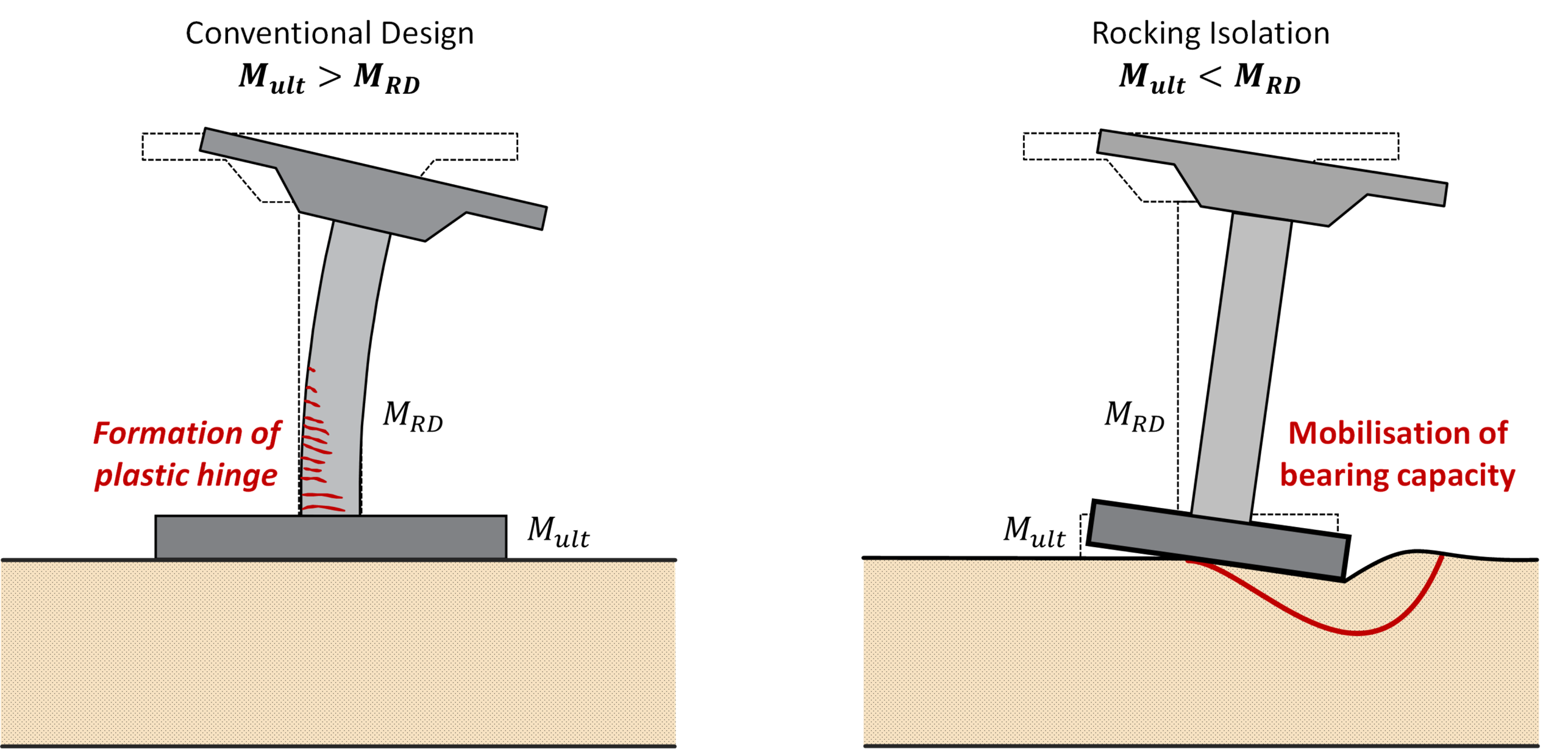
Starting with the development and validation of numerical models (external page J35) and dimensional analysis (external page J43), combining numerical and physical modelling we have been investigating the efficiency of rocking isolation for a variety of structures, ranging from simple bridge piers and SDOF systems (external page J40, external page J45, external page J56, external page J63, external page J75) to frames (external page J36, external page J39, external page J41, external page J50, external page J61, external page J70) and complete bridge–foundation–abutment–soil systems (external page J74). We quantified the role of scale effects by testing the same rocking foundations in 1g and in a centrifuge (external page J57), and investigated shallow soil improvement through 1g (external page J44, external page J64) and centrifuge model testing (external page J62), demonstrating its effectiveness in reducing residual settlements. Our experimental work is included in the ForCy (external page J92) and ForDy (external page J93) databases, which are the result of international collaboration led by Prof. Bruce Kutter (UC Davis).
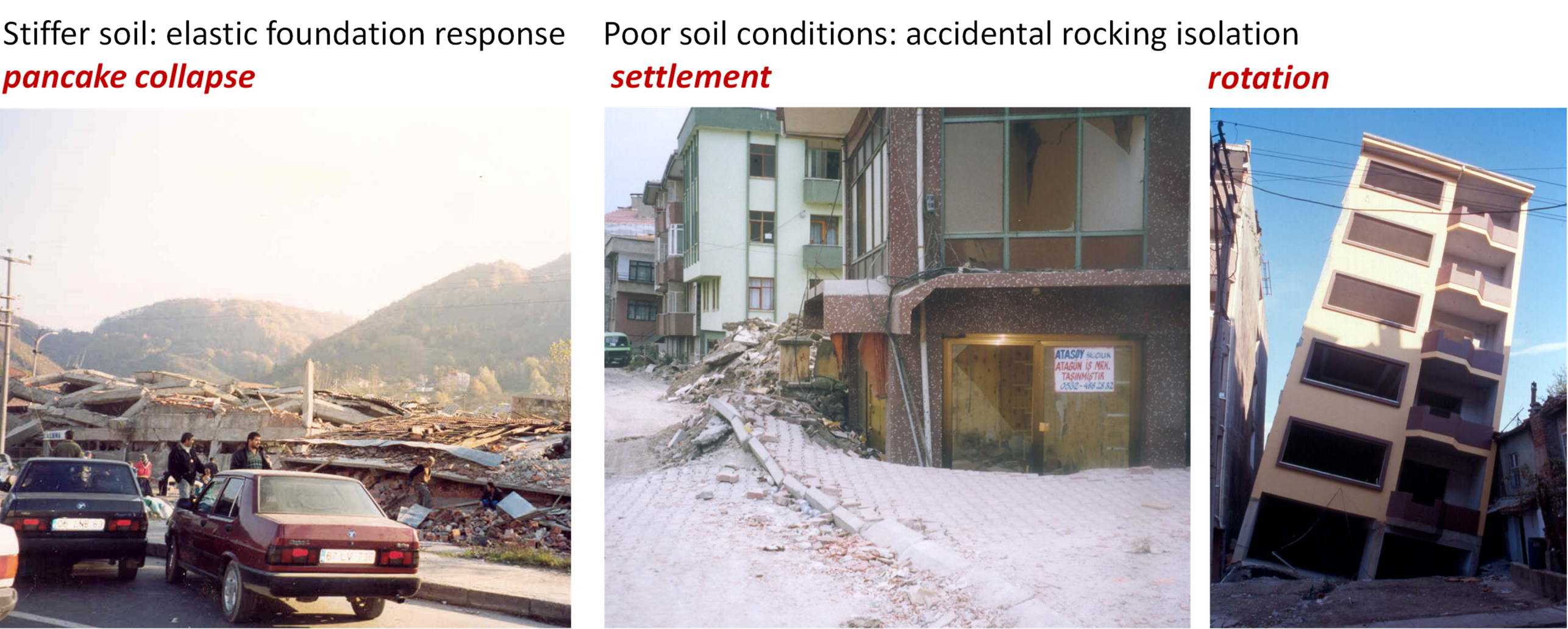
To facilitate application of rocking isolation in engineering practice, we have devoted significant effort in developing simplified analysis techniques, accounting for fully inelastic soil response and geometric nonlinearities (external page J52, external page J53). Our recent work has focused on the robustness of such simplified analysis techniques (external page J99). Employing stochastic methods, we have shown that the developed simplified methods are not biased and can therefore be used to estimate probabilities of exceedance of a certain threshold of foundation rotation.

Selected recent publications
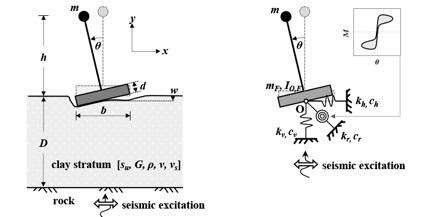
Sieber M., Klar S., Vassiliou, M. F. & Anastasopoulos I. (2020). “Robustness of simplified analysis methods for rocking structures on compliant soil”, Earthquake Engineering and Structural Dynamics, 1-18 (external page J99)
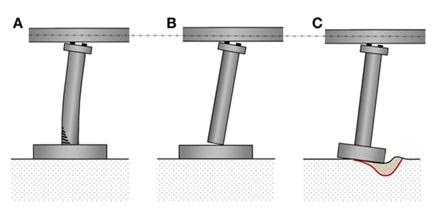
Agalianos A., Psychari A., Vassiliou M. F., Stojadinovic B. & Anastasopoulos I. (2017). “Comparative assessment of two rocking isolation techniques for a motorway overpass bridge”, Frontiers in Built Environment, 3(47) (external page J74).
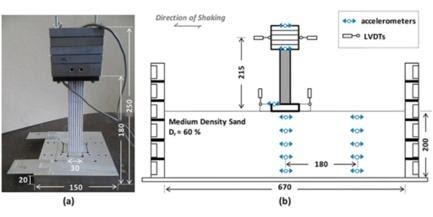
Loli M., Knappet J.A., Brown, M. J., Anastasopoulos I. & Gazetas G. (2014). “Centrifuge modeling of rocking-isolated inelastic RC bridge piers”, Earthquake Engineering and Structural Dynamics, 43: 2341-2359 (external page J56)